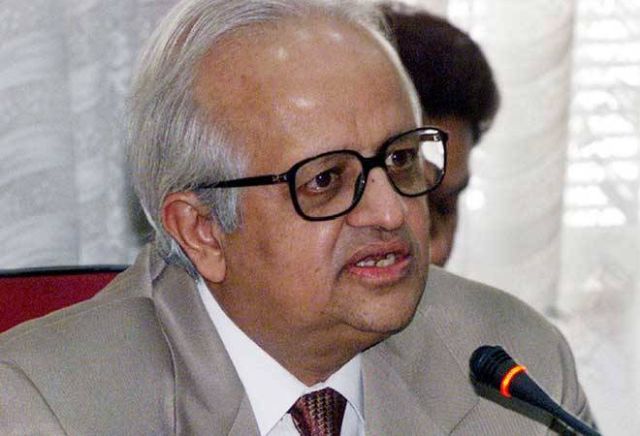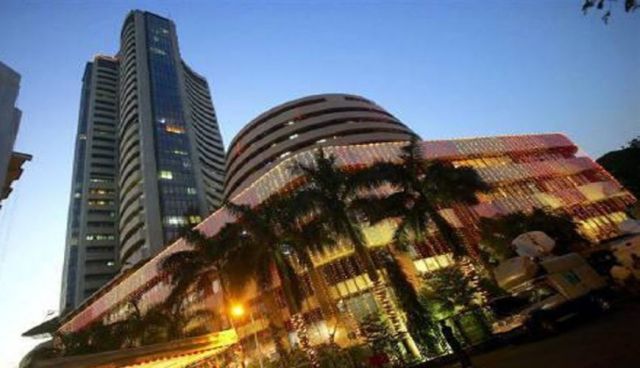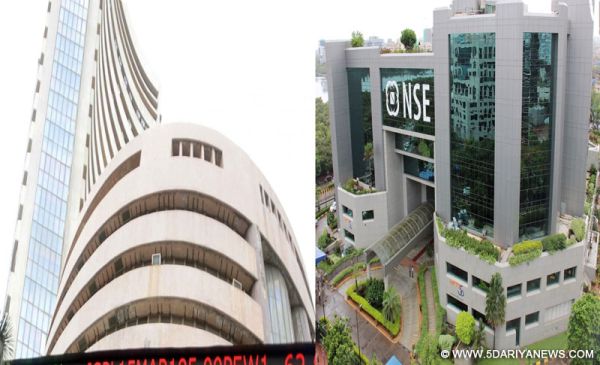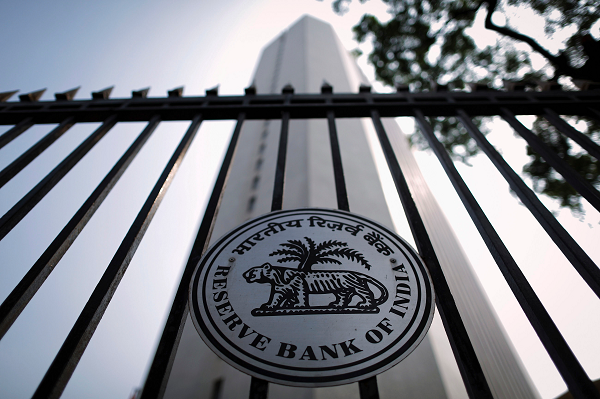
by admin | May 25, 2021 | Banking, Economy, Finance, News, Opinions
 By Nikhil Arora,
By Nikhil Arora,
The battle between the Indian government and its central bank is neither new nor unique.
Though the ongoing spat between the Reserve Bank of India (RBI) and the government can boast of multiple drivers, the most recent, and by all appearances a perennial bone of contention, is the former’s adoption of Flexible Inflation Targeting (or FIT) as its monetary policy framework.
What is FIT? Through an agreement signed between the RBI and the government as at February 20, 2015, RBI decided to adopt a “modern monetary policy framework” with the objective to “primarily maintain price stability, while keeping in mind the objective of growth”.
Thus, price stability became an overarching objective of monetary policy, moving other factors to the background.
The said price stability is to be achieved by keeping track of, forecasting, and controlling inflation, meaning that if the percentage change in monthly Consumer Price Index or CPI (headline) year-on-year was outside or expected to be outside a specific range of numbers (the “Target”) for a certain duration, it gives RBI a justification to decrease or increase short-term interest rates.
No other consideration is to have an equivalent weight. Inflation must be granted precedence.
The agreed upon target range at present stands at four per cent with a band of () two per cent for three consecutive quarters.
So, what is the problem? The proponents of FIT argue that it gives a clear goal for policy setting and, over time, helps in establishing the credibility of the central bank while managing and anchoring price and policy expectations of the public. A quantifiable target reduces the chances of monetary policy being steered for political purposes.
Both high inflation and low inflation hurts. While the former eats through real rates of return, i.e. the borrowed interest rate minus inflation; the latter is an indicator of either oversupply or low demand. Hence it makes a lot of sense to keep it on a leash.
However, the outcome of using monetary policy to control inflation often depends on how the said price instability has originated in the first place.
When inflation is demand-driven, i.e. the demand gets too hot for sustainable supply, the FIT approach works well as hawkish monetary policy then becomes a lever to control consumption spend.
However, when inflation is supply-driven, i.e. the supply is artificially low (either due to low productivity, lack of investment, hoarding, supply shocks caused by inadequate monsoons, oil price hikes, etc.) but the demand is “business as usual”, FIT would be less effective as it would lower investment appetite, thereby risking supply being pushed further down.
Warwick J. McKibbin, a Senior Fellow at Brookings, a think tank says: “Falling productivity would cause both a rise in input costs and a fall in output. An inflation targeting central bank would tighten monetary policy as input costs rose but in doing so would reduce real GDP in the economy. Thus, monetary policy would lead to a worse outcome for the real economy than caused by the shock alone.”
Most governments, especially in emerging markets where supply shocks are common, are hence apprehensive of FIT. Plus, there is a natural tendency to blame lack of growth on tighter monetary policy, taking attention away from larger structural issues where fiscal intervention is needed.
Businesses also tend to oppose FIT, linking higher rates to a lower investment appetite which may be a disingenuous claim.
Raghuram Rajan, ex-RBI Governor who pushed for FIT, in his book “I do What I do” elaborates: “I have yet to meet an industrialist who does not want lower rates, whatever the level of rates. But will a lower policy interest rate today give him more incentive to invest?”
Answering his rhetoric himself, he claims: “Even if [RBI cuts] policy rates, we don’t believe banks, who are paying higher deposit rates, will cut their lending rates. The reason is that the depositor, given her high inflationary expectations, will not settle for less than the rates banks are paying her. Inflation is placing a floor on deposit rates, and thus on lending rates.”
What, you may wonder, is the solution? A popular alternative suggested by many has been to track the growth in Nominal GDP (NGDP targeting), instead of inflation. NGDP growth is basically the sum of inflation and real GDP growth.
The idea here is that in supply shock-driven inflation, though the inflation component of NGDP would go up, the real GDP component would go down. Whilst a FIT regime would drive up rates to control inflation but be at the risk of pushing real GDP down further, the NGDP target would be a more holistic measure in that situation, warranting a less dramatic response.
Optically it literally combines the objective of price stability and growth. It would, however, widen the mandate and accountability of the central bank, as per a view shared by The Economist, while it was pushing for a NGDP target framework for the US Federal Reserve (Fed).
“A Central bank with an explicit NGDP level target would have faced (appropriately) intense pressure to do much more much sooner than one with the Fed’s present, vague focus on an inflation target as a means to broader macro-economic stability,” The Economist said.
(Nikhil Arora, a former investment banker at HSBC London, is Founder and CEO at Transfin. Views expressed are personal. He can be contacted at arora.nix@gmail.com)
—IANS

by admin | May 25, 2021 | Interviews

Bimal Jalan
By Biswajit Choudhury,
New Delhi : The sharply depreciating rupee amidst rising global oil prices and the massive foreign funds outflow from the capital market are not crises comparable to the likes of the balance of payments (BoP) emergency India experienced in 1991 because the country’s fundamentals are stronger than before, its BoP is strong and it has one of the highest levels of foreign exchange reserves, says former RBI Governor Bimal Jalan.
On the Reserve Bank of India (RBI) refusing to raise its key lending rate in October as a way to counter the falling rupee and the fund outflows, Jalan told IANS in an interview that in setting its interest rates the central bank’s monetary policy committee has its own set of considerations like inflation, growth and the global economic scenario.
Instead, Jalan, also a former Finance Secretary and Chairman of the Prime Minister’s Economic Advisory Council, says in his latest book — “India Ahead 2025 and Beyond” — that though the country’s fundamentals are much stronger today, it faces several old and new challenges in the area of politics, economics and governance.
“What is happening to the rupee is not a crisis… it is not a situation like in 1991 when we had a grave balance of payments situation. Now we have a much better ability to intervene, the economy has high capacity, we have hi-technology… our fundamentals are strong,” he said in reply to a question.
On the ongoing sharp foreign fund outflows from the capital market, Jalan pointed to the earlier flush of inflows in the preceding period.
“Financially we are in a much stronger position now than, for instance, we were during the Asian financial crisis in the nineties. We were able to handle that crisis, and we can handle this outflow situation now,” he said.
The Asian financial crisis was a sequence of currency devaluations and other events that began in mid-1997 and spread through many Asian markets. The currency markets first failed in Thailand and the contagion spread rapidly throughout Southeast Asia, in turn causing stock market declines and reduced import revenues.
On the other hand, the former Governor pointed to the need for reform in the wider area of political economy as elaborated in his latest book, which would include strengthening the prudential, provisioning and capitalisation norms of state-run banks to bring them in line with the best international standards and reduce the possibilities of future financial crises.
The accumulated non-performing assets (NPAs), or bad loans of banks, which have crossed a staggering Rs 10 lakh crore, are a matter of great concern, he writes.
“PSBs (public sector banks) have to decentralise. Banks report now to the government, which should withdraw from the actual day-to-day governance of banks,” Jalan said.
“The government should restrict its role to deciding on policy and monitoring the performance of banks. It has to decide to do this reform.”
He pointed out that some reform measures, like the RBI’s Prompt Corrective Action (PCA) framework for banks and enactment of the Insolvency and Bankruptcy Code (IBC), had been initiated to deal with the NPA crisis which had provoked risk-aversion among banks and has been accompanied by a significant decline in private corporate revenues and investment.
“All these measures could have been taken a little earlier… one or two years ago,” he said.
Declining to comment on the RBI-government relations, Jalan, instead, drew attention to the many old and new challenges in the areas of politics economics and governance that the country faces which are the focus of his book.
“These can only be met if we are able to generate sufficient political will to pursue the right policies and shake off the dead weight of the past,” he said.
The RBI has recently underlined the importance of its autonomy and warned that the government’s focus on short-term goals could be harmful to the economy.
At a public lecture in Mumbai last week, RBI Deputy Governor Viral Acharya said undermining the regulator’s independence could be “catastrophic”, citing the examples Argentina’s former central bank chief, who resigned following a dispute over the transfer of reserves, and the recent criticism of their central banks’ actions by the US and Turkish Presidents.
Finance Minister Arun Jaitley retaliated by alleging that the central bank looked the other way when indiscriminate lending happened between 2008 and 2014 leading to the NPA crisis.
Media reports earlier this week said that the government has invoked Section 7 of the RBI Act that empowers it to consult and direct the RBI to act on issues that it considers necessary in public interest.
Facing criticism for invoking a hitherto unused section to issue instructions to the RBI, the government on Wednesday said that it respected the autonomy of the central bank but within the framework of the RBI Act.
(Biswajit Choudhury can be reached at biswajit.c@ians.in)
—IANS

by admin | May 25, 2021 | Banking, Economy, Markets, News
 Mumbai : Despite negative global markets, the Indian stock indices surged by over two per cent on Monday, as value buying, along with an official announcement on fresh liquidity infusion in the debt market, uplifted investors’ sentiments.
Mumbai : Despite negative global markets, the Indian stock indices surged by over two per cent on Monday, as value buying, along with an official announcement on fresh liquidity infusion in the debt market, uplifted investors’ sentiments.
According to market observers, value buying emerged after a correction which dragged both the S&P BSE Sensex and the Nifty50 to their respective seven-month lows last Friday.
On the liquidity front, the Reserve Bank of India’s announcement on a fresh bond buying programme in November to inject funds into the debt market soothed investors’ nerves, especially after caution prevailed over an impending credit crunch.
However, negative global markets and outflows of foreign funds capped gains.
Index-wise, the NSE Nifty50 settled higher by 220.85 points, or 2.20 per cent at 10,250.85 points.
Similarly, the S&P BSE Sensex made substantial gains. It opened at 33,549.88 points and closed higher by 718.09 points, or 2.15 per cent, at 34,067.40 points.
The Sensex swung over 800 points, touching a high of 34,154.60 points and a low of 33,341.80.
“Stock markets in India witnessed a relief rally today as key benchmark indices surged in opening trade and sustained the momentum through the day,” said Abhijeet Dey, Senior Fund Manager-Equities, BNP Paribas Mutual Fund.
“Overseas, Asian markets declined while European markets traded firm as investors tracked a number of political events and waited for further earnings reports.”
HDFC Securities’ Retail Research Head Deepak Jasani said: “Technically, with the Nifty bouncing back, traders will need to watch if the recent rally can sustain and reverse the current downtrend.”
“Further upsides are likely once the immediate resistances of 10,274 points are taken out. Crucial supports to watch for any weakness are at 10,150 points,” he added.
In terms of investments, the week began with the continued trend of massive outflow of funds witnessed throughout October, as provisional data with the exchanges showed that foreign institutional investors sold stocks worth Rs 2,230.79 crore.
Domestic institutional investors bought scrip worth Rs 2,526.90 crore.
As per data provided by the National Securities Depository (NSDL), the monthly outflow of foreign funds at Rs 38,797 crore from the equity segment was at its highest since 2002, while on a yearly basis, the outflow in the current year comes second just to the levels seen in 2008 when the foreign investors withdrew Rs 51,252 crore.
Nevertheless, the domestic currency closed nearly flat at Rs 73.44 to a dollar from its Friday’s close of 73.46. Brent crude, the benchmark oil price, was trading around $77.49 a barrel.
Top gainers on the Sensex was dominated by banking stocks, out of which ICICI Bank gained the most days after it reported a 55.84 per cent year-on-year decline in its standalone net profit for the quarter ended in September 30.
The private lender’s scrip closed higher by over 11 per cent to settle at Rs 349.15 a share. It was followed by State Bank of India, up 10.82 per cent at Rs 349.15; Adani Ports, up 7.33 per cent at Rs 326.60; Larsen and Tubro, up 5.25 per cent at Rs 1260.80; Tata Motors (DVR), up 5.04 per cent at Rs 95.95 and Bharti Airtel, up 0.83 per cent at Rs 298.30 and Axis Bank up 4.96 per cent at Rs 564.
The top losers were IndusInd Bank down 2.36 per cent at Rs 1,410.95; HDFC Bank, down 1.95 per cent at Rs 1,924; Kotak Mahindra Bank, down 1.85 per cent at Rs 1,137.55; and Bharti Airtel, down 1.56 per cent at Rs 293.65 and Hindustan Uniliver down 0.54 per cent at Rs 1,552.05 per share.
—IANS

by admin | May 25, 2021 | Banking, Economy, Markets, News
 Mumbai : Inflationary risks and uncertain global economic scenario led the RBI to adopt the new calibrated tightening stance on interest rates, according to the minutes of the central bank’s latest Monetary Policy Committee (MPC) meeting released on Friday.
Mumbai : Inflationary risks and uncertain global economic scenario led the RBI to adopt the new calibrated tightening stance on interest rates, according to the minutes of the central bank’s latest Monetary Policy Committee (MPC) meeting released on Friday.
“Recognising that inflation risks have been persistent, and to reaffirm the commitment to securing the mandated 4 per cent inflation target on a durable basis, it is apposite to change the stance of monetary policy from “neutral” to acalibrated tightening’,” said RBI Governor Urjit Patel was quoted as saying in the minutes of MPC meeting held earlier in this month.
“aCalibrated tightening’ means that in the current rate cycle, a cut in the policy repo rate is off the table, and we are not obliged to increase the rate at every policy meeting.”
On Oct 5, RBI held its key lending rate unchanged in the context of an uncertain global economic scenario but turned hawkish in its stance.
The MPC had decided to keep the repo, or the short-term lending rate for commercial banks, unchanged at 6.5 per cent.
—IANS

by admin | May 25, 2021 | Banking, Corporate, Corporate finance, Corporate Governance, Economy, Finance, News
 Mumbai : The Reserve Bank of India (RBI) has expressed its dissent against certain amendments recommended by a government committee for the Payment and Settlement Systems (PSS) Act, 2007.
Mumbai : The Reserve Bank of India (RBI) has expressed its dissent against certain amendments recommended by a government committee for the Payment and Settlement Systems (PSS) Act, 2007.
An Inter-Ministerial Committee for finalization of amendments to the PSS Act was formed by the government under the chairmanship of Secretary, Department of Economic Affairs.
The Committee’s recommendations have been placed in public domain. An RBI representative has submitted a dissent note on certain recommendations of the committee.
“It may be mentioned that RBI does welcome changes and is not totally against a new PSS Bill if indeed required,” the apex bank said in the note.
“It has to be, however, recognized that changes should not result in existing foundations being shaken and the potential creation of disturbances in an otherwise well-functioning and internationally acclaimed structure as far as India is concerned.
According to the note, the Payments Regulatory Board (PRB) must remain with the Reserve Bank and headed by the Governor, RBI.
“It may comprise three members nominated by the government and RBI respectively, with a casting vote for the governor to ensure smooth operations of the Board,” the dissent note said against the recommendation to form and composition of the PRB as an independent regulator.
“The composition of the PRB is also not in conformity with the announcements made in the Finance Bill by the Honourable Finance Minister.”
As per the note, payment systems are a sub-set of currency which is regulated by the RBI.
“The overarching impact of Monetary policy on payment and settlement systems and vice versa provides support for regulation of payment systems to be with the monetary authority,” the note said.
“In India, the payment system is bank-dominated. Regulation of the banking systems and payment system by the same regulator provides synergy and inspires public confidence in the payment instruments.”
—IANS





